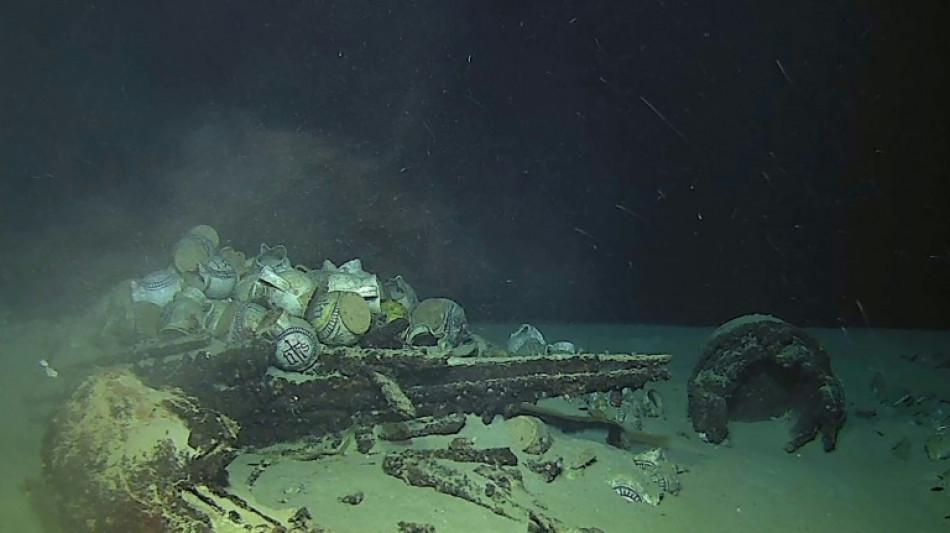
Archaeologists find France's deepest shipwreck

Archaeologists have discovered what they say are the remains of a 16th-century merchant ship more than 2.5 kilometres underwater off southern France, the deepest such find in its section of the Mediterranean or any other French waters.
Archaeologists believe the ship was sailing from northern Italy loaded with ceramics and metal bars before it sunk.
Despite a little modern household waste dotting its sunken cargo at 2,567 metres (more than 1.5 miles) below sea level, they were excited about the potential of an archaeological site largely preserved intact.
"It's the deepest shipwreck ever found in French territorial waters," Arnaud Schaumasse, the head of the culture ministry's underwater archaeology department, said late Wednesday.
An underwater drone stumbled upon the sunken ship by chance in early March in waters near Saint-Tropez in southeastern France, deputy maritime prefect Thierry de la Burgade said.
"The sonar detected something quite big, so we went back with the device's camera, then against with an underwater robot to snap high-quality images," he said.
The drone was patrolling the seabed as part of a government project to explore and monitor France's deep-sea resources, from minerals to deep-sea internet cables.
Archaeologist Marine Sadania said experts discovered 200 jugs with pinched spouts among the wreckage at the site they have dubbed "Camarat 4".
Some of these jugs were marked with the monogram "IHS", the first three letters of the Greek name of Jesus, or covered with plant-inspired or geometric patterns.
Those details seemed to indicate the jugs hailed from the Liguria region in what is now northern Italy, she said.
- 'As if time froze' -
Experts also identified piles of around 100 yellow plates, two cauldrons, an anchor and six cannons.
Modern waste, such as a soda can or an empty yoghurt pot, were spotted too.
But despite this, "the site -- thanks to its depth which prevented any recovery or looting -- has remained intact, as if time froze, which is exceptional," Sadania said.
Over the coming two years, she and colleagues plan to draw up a 3D digital version of the ship, as well as extract samples from the site to better study them before returning them to the public domain.
According to the defence ministry in charge of exploring France's deep seas, researchers can remove an item from a shipwreck by guiding a submarine robot with pincers or arms, via a long cable linking the device to a boat on the surface.
The deepest French authorities had found a sunken vessel until now was 2.3 kilometres under sea level off the southern city of Toulon in 2019.
The wreckage belonged to La Minerve, a French submarine that plunged to its demise in 1968 with 52 navy crew on board, four minutes only after the start of a routine assignment.
O.Bertrand--PS

 London
London

 Manchester
Manchester
 Glasgow
Glasgow
 Dublin
Dublin
 Belfast
Belfast
 Washington
Washington
 Denver
Denver
 Atlanta
Atlanta
 Dallas
Dallas
 Houston Texas
Houston Texas
 New Orleans
New Orleans
 El Paso
El Paso
 Phoenix
Phoenix
 Los Angeles
Los Angeles



